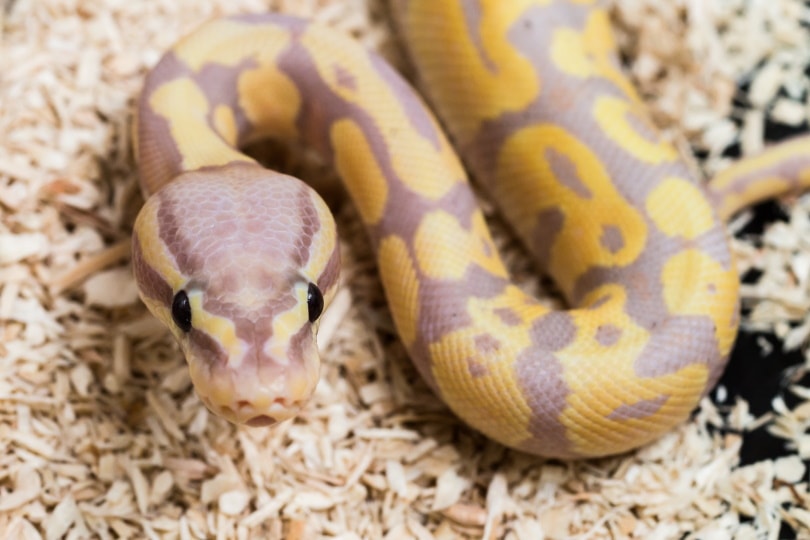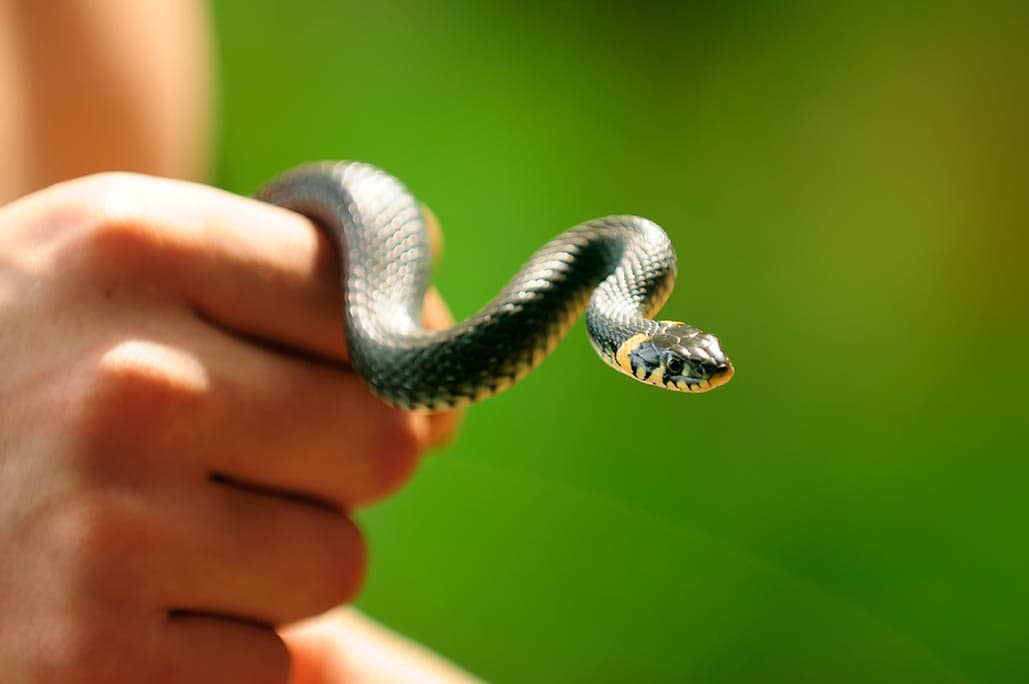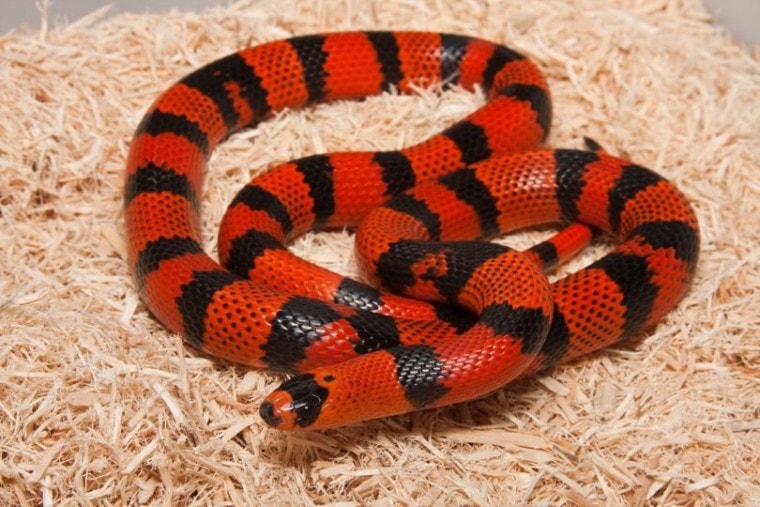
Honduran milk snakes live in the rain forests of Central America and have bright colors, which help them blend in with the leaves and flowers. They eat invertebrates primarily like slugs, insects, spiders and worms, and small mammals when they get larger than 12 inches long.
Caring for this snake is relatively simple, but you have to know what you’re doing. Let’s take a closer look at our scaly friends.
This article will cover Honduran milk snakes, their needs, and how you can provide them with an exceptional home.
 Quick Facts about Honduran Milk Snake
Quick Facts about Honduran Milk Snake
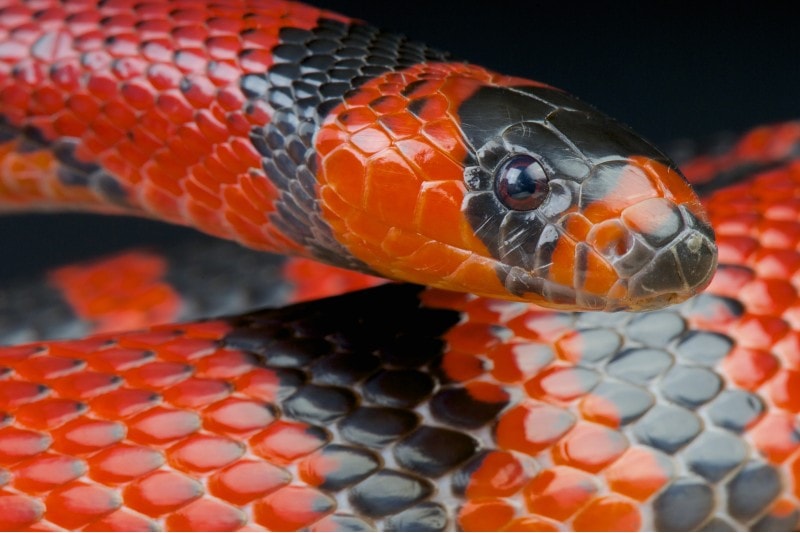
| Species Name: | Lampropeltis triangulum hondurensis |
| Common Name: | Honduran Milk Snake |
| Care Level: | Intermediate |
| Lifespan: | 15-20 years |
| Adult Size: | 3-5 feet |
| Diet: | Small rodents and insects |
| Minimum Tank Size: | 30 gallon |
| Temperature & Humidity | Temperature: 78-90°F Humidity: 50-70% |
Do Honduran Milk Snakes Make Good Pets?
Although not quite as popular as the corn snake for beginners, the Honduran milk snake is a well-liked pet. Some herpetologists even consider them better pets than corn snakes, even though they are not as easy to care for.
Their temperament and small size make them ideal for people who live in apartments or don’t want to own a large snake. As far as handling is concerned, these snakes are usually not aggressive towards humans.
 How to Take Care of Honduran Milk Snake
How to Take Care of Honduran Milk Snake
Once you bring your pet snake home, there are simple steps you can take to make it feel like they belong.
Habitat, Tank Conditions & Setup

Tank
First and foremost, your snake needs a tank. A 20-gallon long glass terrarium is the absolute minimum size that they need to thrive in captivity. If your pet grows too large for the 20-gallon terrarium or seems bored, you can switch it over into a larger tank or even a cage that is custom-made for snakes.
As an owner, it’s your responsibility to ensure that the environment in which your pet lives meets their needs. This means providing them with ample space and hiding places where they can feel secure and comfortable.
Lighting
One of the most important things for a snake to do is shed its skin. To help them with this process, they need some very basic things like heat and light. Bright white lights can help stimulate their appetite, so you’ll want to provide them.
If your tank has a screen top that will allow UVB lights and sunlight through, that’s even better. The brand Zoo Med makes lights that can be made to fit inside the cage, so you won’t need to take your pet out of his home just to get him some light.
Heating (Temperature & Humidity)
It doesn’t matter what type of snake you have or what kind of habitat they live in; these are cold-blooded animals that need heat. If you notice your snake is sluggish or hiding in the corner of their tank, it may be because they are too cold.
Ideally, you should keep your snake’s tank around 80 degrees Fahrenheit to give them the heat they need. You can use a submersible aquarium heater or some heat tape to help you regulate the temperature, but this isn’t always necessary.
These snakes prefer humidity levels between 50-75%, so be sure to check and maintain those levels as well.
Substrate

Once you have the tank set up, it’s important to provide your snake with a secure and comfortable home. Substrate for this type of snake can consist of anything from aspen bedding to newspaper.
The Honduran milk snake will mostly use it for covering or nesting purposes. You can also add branches, moss, or rocks to give it a more natural feel.
| Tank Recommendations | |
| Tank Type: | 20 gallon glass vivarium |
| Lighting: | UVB Lighting |
| Heating: | Heating pad/submersible heater |
| Best Substrate: | Newspaper |
Feeding Your Honduran Milk Snake

Honduran milk snakes are not picky eaters, but they should never be fed just anything without ample research first. The main food that you should feed them is a pre-killed or live rodent, usually a mouse.
Hatchling snakes should only be fed small prey like regular-sized crickets or roaches. Avoid feeding them large insects that are too heavy for them to digest properly.
If your snake is growing too slowly or seems lethargic, consult a reptile veterinarian. Sometimes overfeeding your pet can create health problems for them. It’s also just as important to have fresh water available at all times.
| Diet Summary | |
| Insects | 10% of diet |
| Meat | 85% of diet – small/medium sized rodents |
| Optional Supplements | Water with nutrition powder |
Keeping Your Honduran Milk Snake Healthy
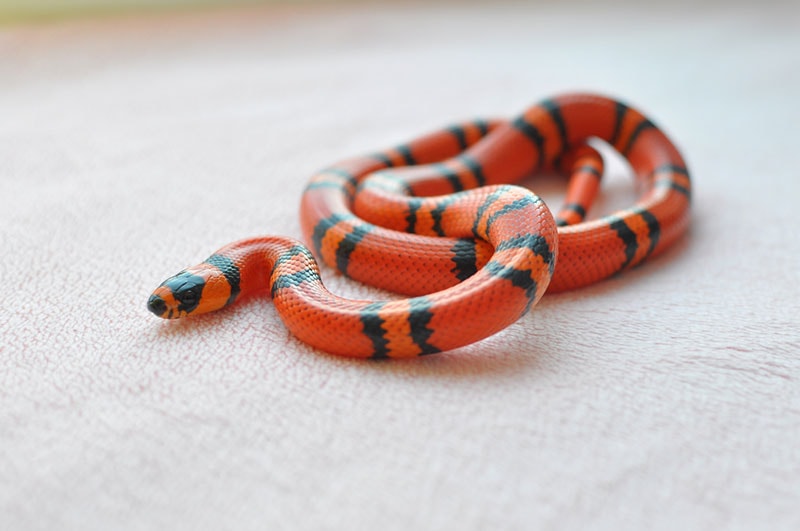
The main things to look out for when trying to keep a pet snake healthy are feeding, shedding, and health issues. If your pet isn’t eating, they may be too stressed or uncomfortable in their environment.
Failing to shed can be a sign of poor nutrition or stress, so make sure you’re addressing these problems before they get any worse.
Common Health Issues
Health issues for these snakes are usually genetic. They can suffer from things like respiratory infections, septicemia, and even kidney failure due to improper care. To keep them healthy as you own them, make sure they have proper humidity, exposure to sunlight, or a UVB lamp and that you’re feeding them enough but not too much.
If your snake is acting sluggish or lethargic, it could be due to infection from parasites such as mites, ticks, or ringworm. In this case, visit a reptile veterinarian to get treatment immediately.
Lifespan

In captivity, Honduran milk snakes can live from 12 to 20 years.
In the wild, they have been known to live about 7-12 years.
Breeding
Breeding a Honduran milk snake is usually fairly easy. Males will be attracted to the scent of female snakes and may begin to follow her around.
In some cases, it might take a few days for male snakes to make their intentions known, but once they do, your female snake should become receptive and amorous toward him. She will rub against the wall in a ritual courtship dance and, in some cases, will even allow the male to mate with her.
If you want to be sure that your snakes are, in fact, breeding, it is best to keep them separate for a week or so. After this time has elapsed, they should be ready to breed.
 Are Honduran Milk Snakes Friendly? Our Handling Advice
Are Honduran Milk Snakes Friendly? Our Handling Advice

Honduran milk snakes are not aggressive by nature, but they can bite if provoked. If you try to pick up a Honduran milk snake in the wild, it will likely quickly curl into the fetal position or get away from you as best it can.
When domesticated since birth, however, these snakes are generally very affectionate. They will coil around your hand and lap at your skin, even curling up in a ball when they’re relaxed.
Honduran milk snakes need to be handled occasionally, but make sure you’re holding them gently as their bones are quite fragile for their size.
Shedding & Brumation: What to Expect
You should expect your Honduran milk snake to shed on average once or twice per year. Usually, the snakes will not eat before they shed and then emerge afterward, looking healthier than ever with their eyes a vibrant red color.
However, if your snake stays in its cage after shedding with no appetite for food and still looks dull, check with a reptile veterinarian right away.
Brumation for Honduran milksnakes is common but not necessary. Some keepers choose to put their snakes in the fridge or another cool place during this time as it is standard procedure for other reptiles.
How Much Do Honduran Milk Snakes Cost?
Honduran Milksnakes are not a common pet. Their uniqueness and beauty will earn them anywhere from $250 to as much as $1000, depending on age and coloration.
Care Guide Summary
 Final Thoughts
Final Thoughts
Honduran milk snakes are brightly colored and easy to care for. They make great pets, but you must understand how to take proper care of them before deciding to add one to your household.
We have all sorts of information about snakes on our blog, so feel free to look around and soak up as much knowledge as you can.
Related Reads:
- 9 Best Pet Snakes for Beginners (With Pictures)
- Sinaloan Milk Snake: Facts, Appearance & Care Guide (with Pictures)
Featured Image Credit: Nathan A Shepard, Shutterstock
 Quick Facts about Honduran Milk Snake
Quick Facts about Honduran Milk Snake How to Take Care of Honduran Milk Snake
How to Take Care of Honduran Milk Snake